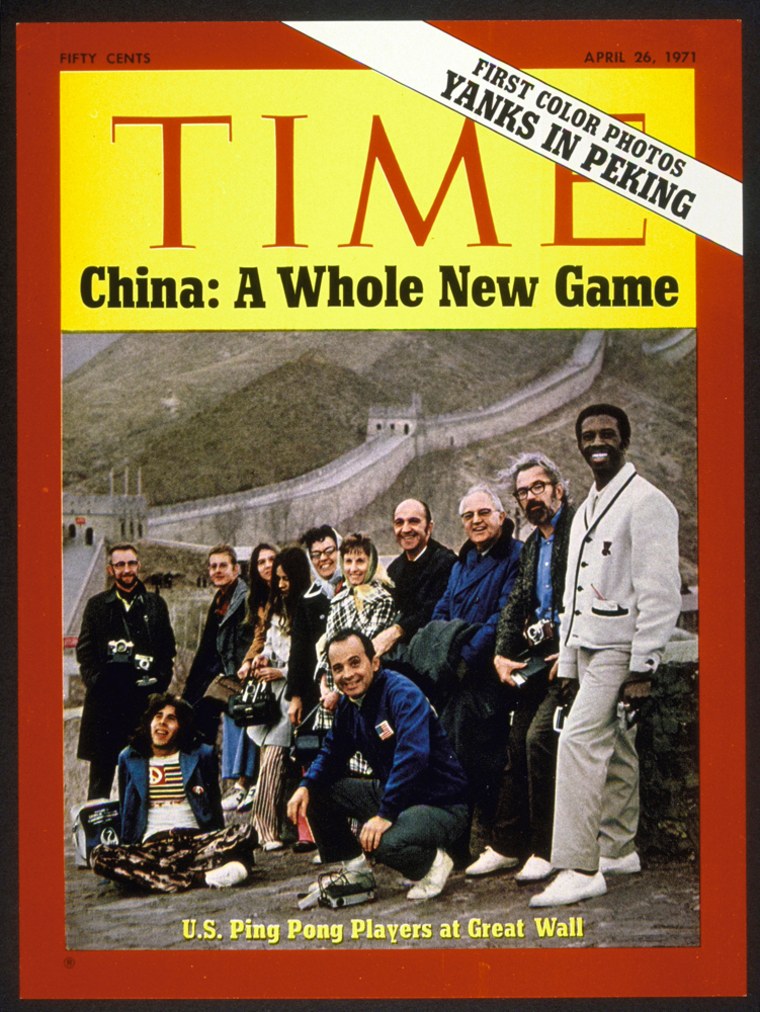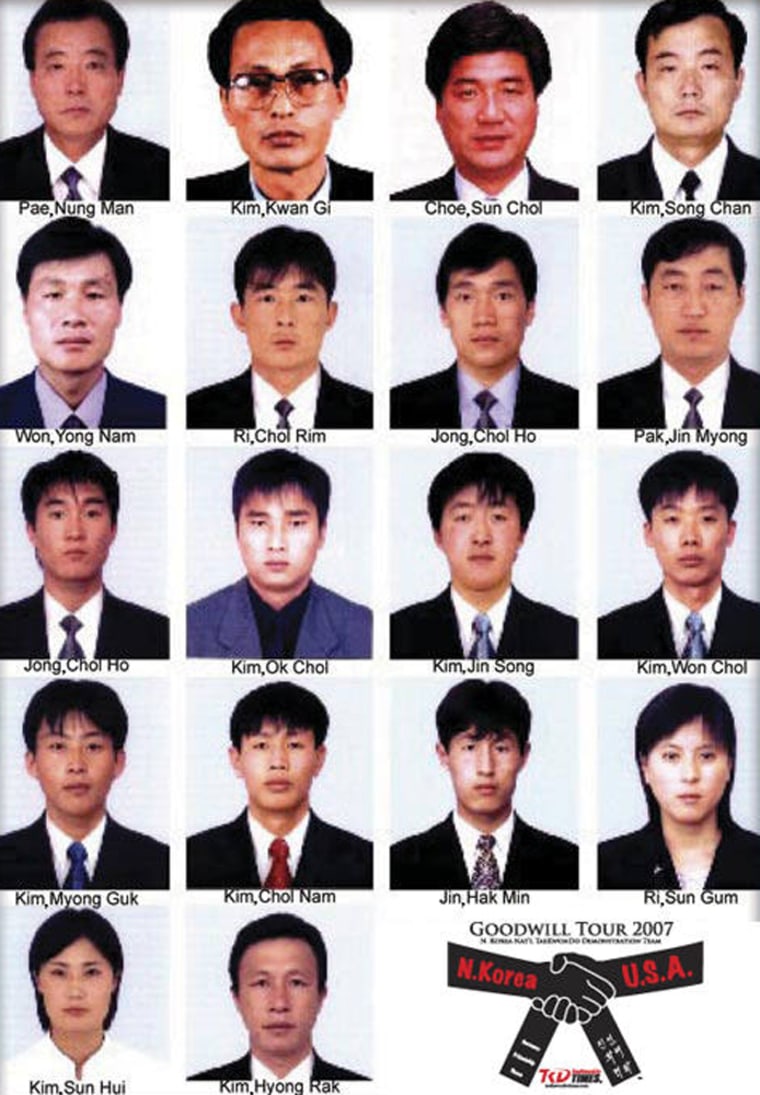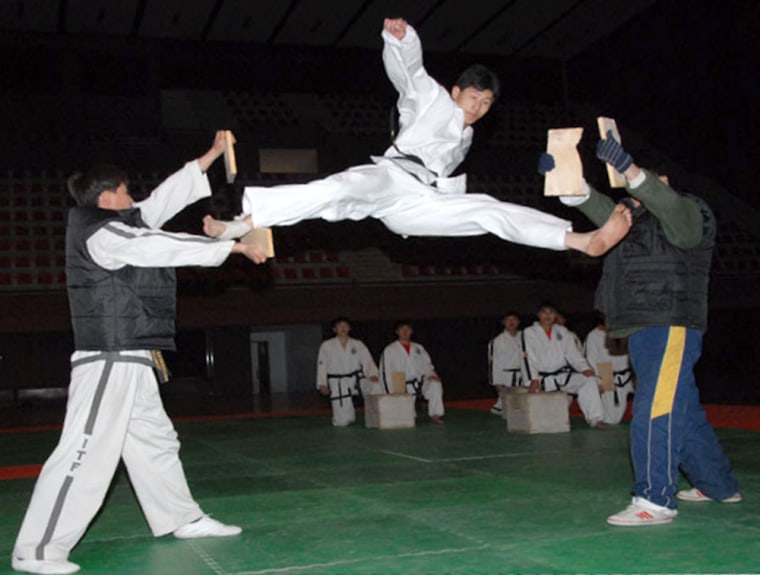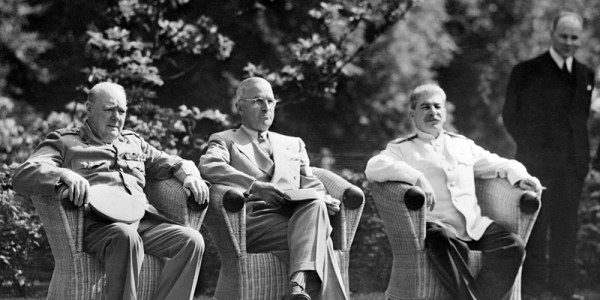In a visit already drawing comparisons to the "ping pong diplomacy" between the U.S. and China in the 1970s, a team of North Korean masters of the martial art tae kwon do is expected to arrive in Los Angeles on Thursday for an unprecedented 13-day American tour.
In Los Angeles, the 18 North Koreans are expected to be joined by American and South Korean practitioners of the ancient Korean combat art in a three-hour performance. They also will spend the day hobnobbing at the quintessentially American institution, Warner Brothers Studios, before traveling to San Francisco; Cedar Rapids, Iowa; Louisville, Ky.; and Atlanta.
All that assumes that the North Koreans actually arrive at Los Angeles International Airport as scheduled, something the organizers of the tour — the Tae Kwon Do Times of Cedar Rapids, Iowa—have discovered should not be taken for granted. A tour by the tae kwon do masters last year was canceled at the eleventh hour when the U.S. refused to issue travel visas for the troupe, presumably because North Korea had just tested a nuclear bomb.
But Brian Heckart, the magazine’s business manager, is optimistic they will make it this time, having received word that the team members are in Beijing and have visas in hand. Still, he cautioned, “It’s never 100 percent until they land in the United States.”
If the shows go on as planned, viewers will have no difficulty appreciating the tae kwon do masters’ gravity-defying leaps and brick-busting kicks. But for North Korea watchers, the political acrobatics going on in the background are every bit as spectacular.
“The U.S. has been allowing North Koreans in — quietly and for different reasons,” Clark Sorenson, a professor of Korean Studies at the University of Washington, said of the visit. “But for the North Koreans to release 18 tae kwon do people is a pretty big deal.”
Shades of 'ping pong diplomacy'
Some observers are comparing the tour to another sports event that became part of diplomatic history 35 years ago.
The tour has “echoes of the ‘ping pong diplomacy’ with China in the 1970s,” wrote Timothy Savage, deputy director of the Seoul branch of the Nautilus Institute for Stability and Security, in a posting on the Web site North Korea Zone.

The famous U.S.-Chinese table-tennis matches in Beijing in 1971, quietly approved by Chinese Premier Zhou Enlai, turned out to be a vehicle for the isolated Communist giant to begin opening its doors to the West. It helped pave the way for a secret meeting between U.S. Secretary of State Henry Kissinger and Chinese leader Mao Zedong and the celebrated 1972 visit to China by President Richard Nixon. A decade of cultural exchange followed, along with gradual loosening of trade restrictions, before Washington and Beijing re-established formal diplomatic ties in 1982.
The accuracy of the comparison will only become clear in hindsight.Technically, the United States and ally South Korea remain at war with North Korea. Pyongyang’s military has been arrayed against U.S. and South Korean forces at the 38th parallel since 1953, when the Korean War ended with an armistice but not a truce. Travel by North Koreans to the United States is banned except on a case-by-case basis.
In the absence of diplomatic ties between Washington and Pyongyang, the only North Korean officials living in the country are representatives to the United Nations. They are rarely allowed to travel outside a 25-mile perimeter surrounding U.N. headquarters in New York.
‘Axis of evil' speech deepened divide
The estrangement between the Bush administration and the military regime of Kim Jong Il hit new lows after 2002 when Bush declared Pyongyang part of an “axis of evil,” along with Iraq and Iran. Since then, Pyongyang has retreated from its commitments to nuclear transparency and withdrawn from the nuclear non-proliferation treaty it signed in 1985.
The relationship reached a turning point this year. North Korea agreed to resume the so-called “six party talks” aimed at achieving an agreement to dismantle its nuclear programs, and a final draft is reportedly under review. The Bush administration rewarded Pyongyang’s willingness to talk in September by authorizing $25 million in aid and 50,000 tons of heavy oil for the impoverished nation.
And this week, South Korean President Roh Moo-hyun is in Pyongyang meeting with Kim Jong Il, in just the second North-South summit. This meeting has little of the giddiness that surrounded the meetings in 2000 when former President Kim Dae-jung went to Pyongyang under the rubric of his “sunshine policy,” but experts are taking it seriously.
“There seems to be the perception that this new diplomatic opening is for real, and there seems to be some real optimism about it,” says Keith Rabin, head of KRW International consultancy in New York.
But a State Department official, who agreed to discuss the North Korean visit on condition of anonymity, dismissed the notion that this cultural exchange is a harbinger of flowering bilateral relations.
‘Ping pong tae kwon do? I don't think so'
“Ping pong tae kwon do? I don’t think so,” said the official. “The real thermometer of relations and how they are going to go is what happens in six-party talks" in Beijing.

He also noted that these types of visits by North Korean have been allowed since 1988, when then-President Ronald Reagan signed a law permitting visits by non-governmental delegations from North Korea, including sports teams.
But the reality is that they rarely happen.
North Korea sent teams to compete in Women’s World Cup soccer in the United States in 1999, and the Atlanta Olympics in 1996, but this is the first time a team has visited for reasons other than an international sporting event.
A few U.S.-North Korean scholarly exchanges also take place. For example, Syracuse University has a fledgling information-technology exchange with North Korea's Kimchaek University of Technology.
Individual scholars do visit, and stay on a short leash —usually accompanied by one translator and one political apparatchik to keep tabs on the other two, according to Sorenson, the University of Washington professor.
Savage, of the Nautilus Institute in Seoul, said that even if the taekwondo tour doesn't point to a near-term political settlement, it is the type of cultural exchange that helped ease tensions between the Soviet bloc and the West and ultimately helped end the Cold War.
Not ‘brain-washed automatons’
“Americans get to see North Koreans as something other than brain-washed automatons…,” he said. “And importantly, North Koreans get to see that all Americans are not wolves. … In that alone I think it is a useful exercise.”
“Although most of the delegation will be athletes, there will be some handlers along who will be politically trustworthy members of the elite,” said Savage. “Getting people like that exposed to the United States and involved in foreign travel definitely has long-term value.”
The Seoul-based newspaper The Korea Times sees the tae kwon do tour as part of a modest renaissance of cultural contacts taking place amid improving ties. It reported that a group of North Korean boxers is expected to travel to Chicago later this month to compete in the World Boxing Championships and that the New York Philharmonic is considering an invitation to perform in Pyongyang.
But Marcus Noland, a fellow at the Peterson Institute of International Economics, said the tae kwon do team’s visit does not necessarily mean that U.S-North Korea relations will continue to improve.
"The taekwondo team could play the role it was intended to play as an icebreaker … toward gradual rapprochement," he said.
Noland sees two major potential stumbling blocks that could derail the warming trend: The Bush administration has hinted that it might tighten sanctions on North Korea’s missile exports — a move that Pyongyang would take as an act of hostility. And from the U.S. side, if rumors — so far unproven — that North Korea is providing Syria with nuclear technology are verified, the diplomatic gains could be erased.
"If that’s the case," Noland says, "it’s going to take a lot of tae kwon do teams to patch it up."

